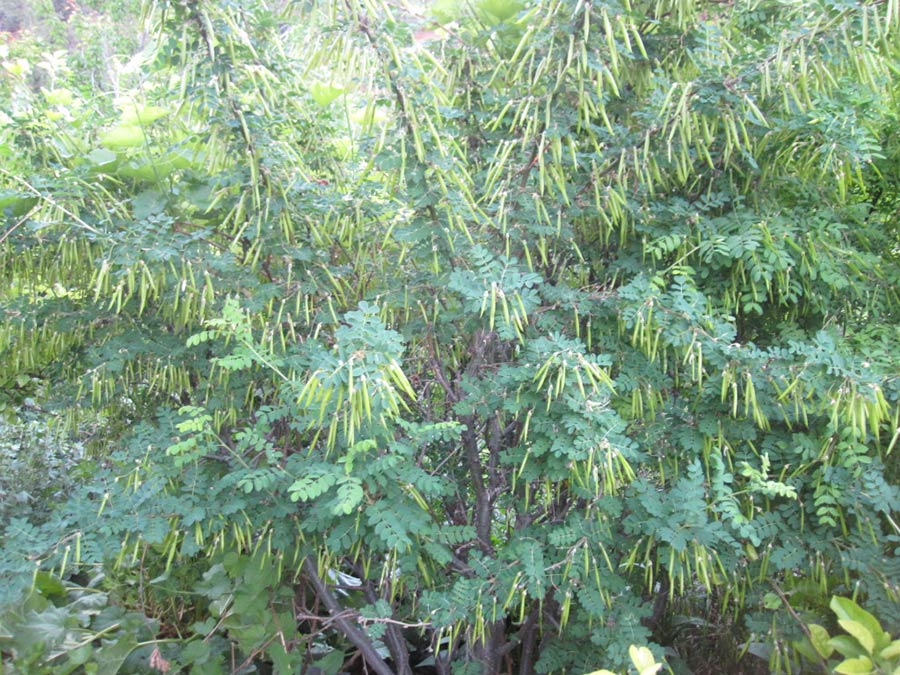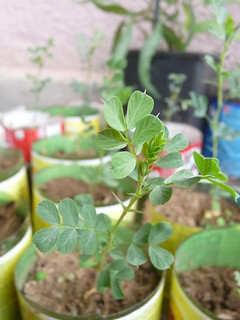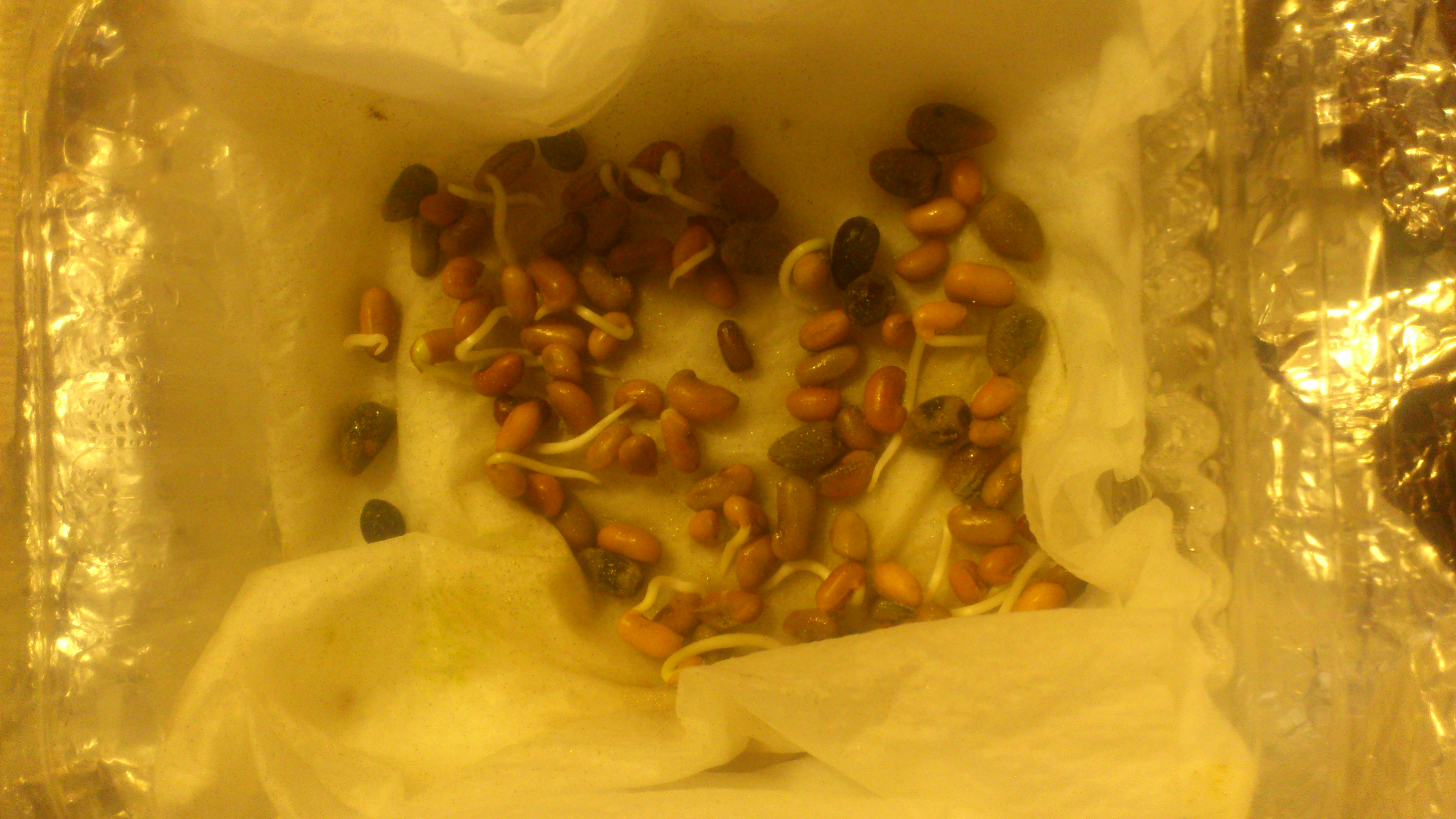|
|
Post by nicolas on Feb 11, 2014 9:48:58 GMT -5
I'm interested in Caragana arborescens (Pea Shrub) as a perennial food for humans and poultry. There is a big work just to screen for best wild or cultivated material in term of seed size, productivity and palatability (for humans). It occurs to me be seeing the difference between two commercial sources of seeds (picture later). Eric Toensmeier talked about Caragana here : www.perennialsolutions.org/siberian-pea-shrub-a-potential-perennial-bean-for-cold-and-arid-regionsI think the easier part is selecting for seed size because one can see it just by opening the seed packet. Palatability is also easy although maybe subjective. Productivity seems painful to do but i think that the limiting factor for caragana is picking time more than productivity by area or tree. It could be far easier if everyone interested in caragana share pictures of its seeds from commercial sources or genebanks, so we can select very rapidly fore seed size. Another complementary way is to breed improved cultivars. Eric talks about " Cram, E.H. “Breeding and Genetics of Caragana”, The Forestry Chronicle, p. 400-401 (1969))" but i was unable to find the PDF free of charge. The picture from Eric's article to inspire you   |
|
|
|
Post by nicolas on Feb 11, 2014 9:57:15 GMT -5
Here are the pics : Left are seeds from Semences Dupuy (bought 2 years ago) and right from OMC Seeds (bought last year)   |
|
|
|
Post by nicolas on Feb 11, 2014 13:19:07 GMT -5
|
|
|
|
Post by paolog on Feb 11, 2014 15:29:29 GMT -5
two questions, do you know what's the highest temperature that C. arborescens can tolerate? There are crops like phaseolus coccineus and chenopodium quinoa that suffer from pollen sterility beyond 30C..
I wonder how C. arborescens will cope with this year's very mild winter since I hear they need very cold winters to be productive :\
Having said that, I'm ordering right now from Dupuy!
|
|
|
|
Post by nicolas on Feb 12, 2014 1:04:15 GMT -5
Hi Paolo ! I dont know about the sterility pb, but i figure that it is not a pb as the pea shrub comes from a continental climate with hot summers. Here the caragana i sown the two previous years are growing slowly but it is maybe that the rhizobia strain common here is not the best for caragana. I hope you'll get big seed, let us know ! I plan to order some next fall. Another thing i forgot to mention, leaves from caragana grown from seeds of Semences Dupuy are different from those from OMC seeds. Leaves of semence Dupyu strain are more thin, and pointed at the extremity. Those from MC seeds and from pictures from the net are more round. A picture f the Semences Dupuy strain before the slug attack :  |
|
|
|
Post by nicolas on Feb 12, 2014 2:37:11 GMT -5
If it is of any help, the big seeds of Semences Dupuy came from Lot 105970 (BL 110781).
|
|
|
|
Post by paolog on Mar 1, 2014 8:36:40 GMT -5
the C. arborescens seeds I received from semences Du Puy are germinating! Treatment: 24h under water (initially at 60-70C) I used a full glass of water, but the recommendation should be of double the volume of seeds in water. 6 days in the box over wet tissue paper, temperature: ~22-24C for 16 hours, 12-13C for 8 hours, 16/8h photoperdiod under very low light (shielded by aluminium foil). The heat was provided by the LED lamp I used (50% warm white leds, 50% cold white). This is a simulation of May at high latitudes, what I thought was needed by C. arborescens. To stop the growth of molds and fungi I used copper/zinc brass powder sprinkled all over, it usually works flawlessly: there's not even need for aeration. The lid was kept closed all the time. Thanks to everybody for the precious tips: without them I couldn't have devised this scheme.  |
|
|
|
Post by nicolas on Mar 1, 2014 10:25:00 GMT -5
Great news Paolo ! d**n i'm such an amateur wrt to you guys. I just put seeds in water and then in some substrate  |
|
|
|
Post by nicolas on Jul 26, 2014 2:13:05 GMT -5
|
|
|
|
Post by papabearjay on Jul 26, 2014 10:37:32 GMT -5
I also have Caragana seedlings in their second year. These were collected in the northern US. But I also have a neighbor who has several Caragana shrubs next door, and I quite commonly hear the pods bursting in the late afternoon.
I have had issues with powdery mildew on my seedlings both this year and last.
|
|
|
|
Post by MikeH on Jul 26, 2014 12:41:15 GMT -5
Try a comfrey tea spray. Mix at a ratio of 15:1 to 20:1. See www.ncbi.nlm.nih.gov/pubmed/11525124. While the linked article focuses on wheat and rust and powdery mildew, I've used it to deal with mildew on Dolgo crab seedlings. Not only did the mildew disappear but the plant leaves got darker and the plants overall seems healthier. If you use water to make the comfrey extract, be prepared for a very strong barnyard smell. I pack the leaves in a container with a plate weighted on top. Much less smell. Milk and whey also apparently have anti-fungal/bacterial properties although I've not tried either so can't attest to whether or not there's anything to that. |
|